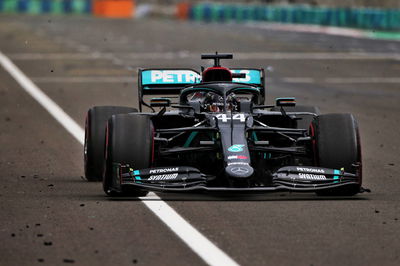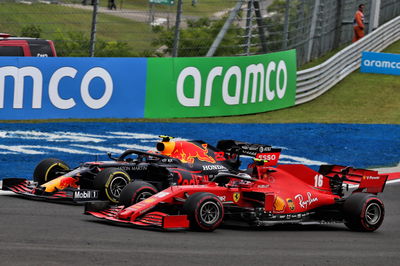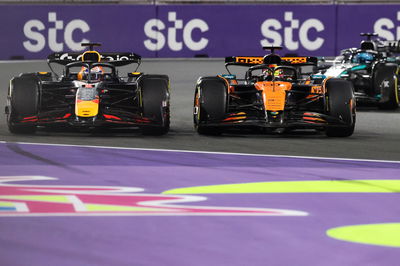Hamilton explains “crucial risk” of F1 fastest lap bonus point

Lewis Hamilton feels setting a last-gasp fastest lap in order to secure an extra Formula 1 world championship point was a “crucial risk” to take during the Hungarian Grand Prix.
Hamilton romped to his eighth victory at the Hungaroring as he took the lead in drivers’ world championship for the first time since the delayed 2020 season began.
The six-times world champion dominated proceedings as he converted his 90th career pole position into a comfortable second win on the bounce to pull five points clear of Mercedes teammate Valtteri Bottas in the standings.
But Hamilton would have only been four points ahead had he not bagged the bonus championship point on offer for setting the fastest lap of the race, which he did on the final lap of the race.
Mercedes made the most of Hamilton’s 27-second lead over Red Bull’s Max Verstappen to make a ‘free’ pit stop for fresh Soft tyres with three laps remaining, and the Briton felt the decision was fully justified.
“Ultimately we had to weigh up the risks,” Hamilton explained after the race.
“I didn’t push so much [on my fastest lap] that I was going to make a mistake and go off, so it was a fully controlled lap.
"I’ve lost the World Championship in the past by one point, so I know how crucial it is to maximise in every moment. We’re in a year where you don’t know what reliability’s going to be like, how long the season’s going to be.
“Valtteri had a great first race, at the time he had the fastest lap, I had the gap [to Verstappen] and felt it was necessary to get that point as I felt like I earned the gap.
"Things like that extra pit stop, coming in, all those different things, do add to the risk factors. But we’re a professional team and I think as long as we continue to keep our heads on, stay focused, I felt like it was the right decision to make.”
Mercedes F1 boss Toto Wolff conceded the pitstop was far from perfect and believes the team can learn from the “confusion” surrounding the late call.
“Our communication was not great around that," Wolff admitted.
"In the morning we agreed that we wouldn't pit for a quickest lap, that it was bearing too much risk.
"The call to pit around lap 60 to protect against the safety car certainly would have been the right call, but then the gap was never quite comfortable enough. It was a second or two, then 2.5, then we hit backmarker traffic.
"Then obviously we communicated with Lewis, so at the end it was a bit of confusion, and four laps to the end he pitted to score the fastest lap.
"I think there's a lot to learn from the intercom conversation that we had in the garage, and the communication to the driver. [It was] certainly not 1A, but at the end the result counts."












